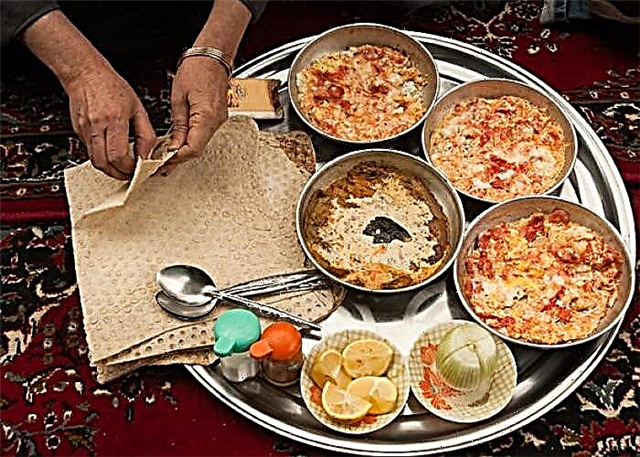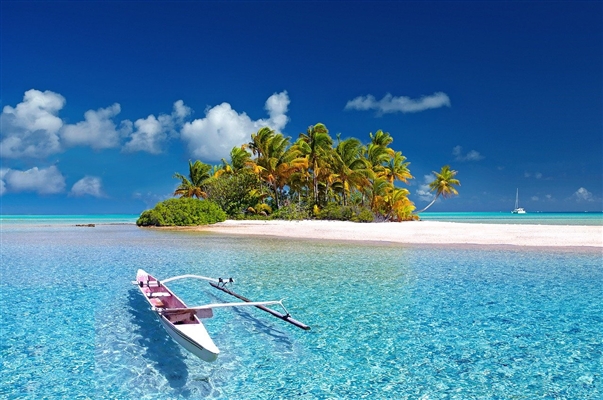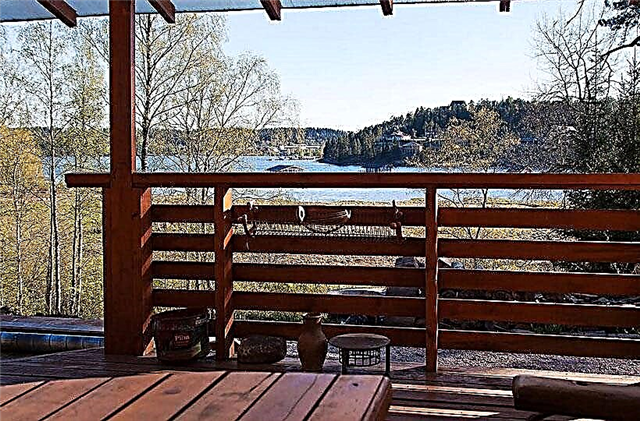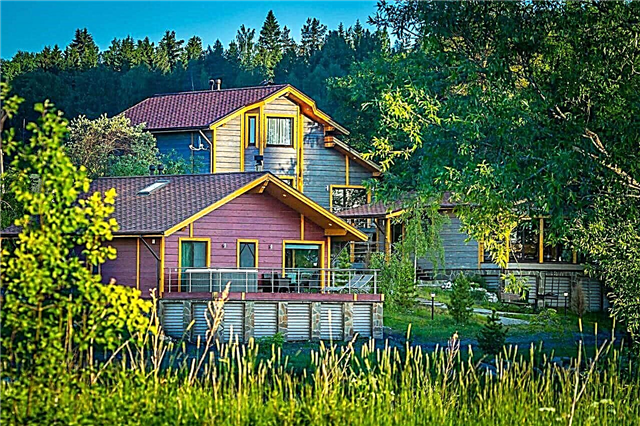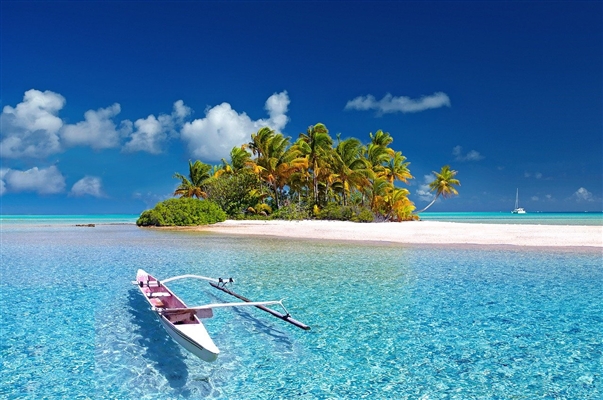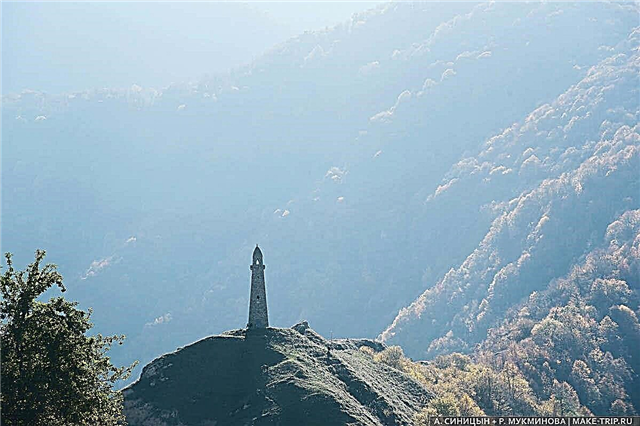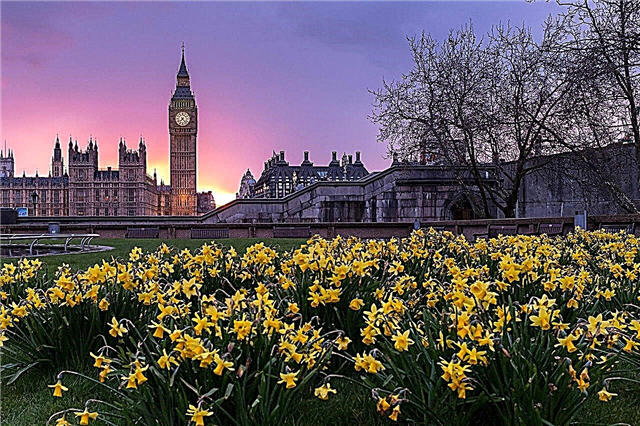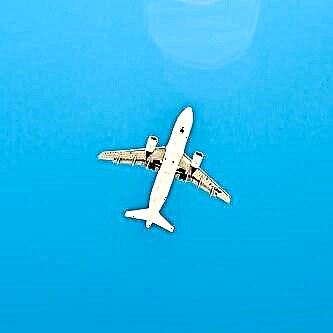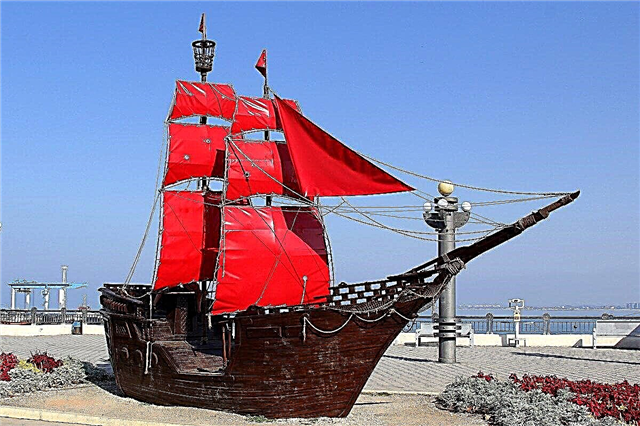Anapa is one of the main resort towns in Russia. The sea warms up quickly and is divided into conditional areas, where both families and extreme lovers can relax comfortably. The ecological situation is also not a cause for concern. Despite the fact that the prices for vacations in Anapa remain democratic, the tourist season is busy here.
Resort and entertainment themes prevail when it comes to the monuments of the city. One of his symbols, the White Hat, is found both as an independent monument and as part of other compositions. The monument "Russian Gate" deserves special attention. It is an object of Ottoman heritage, a preserved fragment of the Anapa fortress.
Historical and modern monuments of Anapa
List of the most famous monuments in Anapa!
"White hat"
The playful monument, which appeared in 2007 at the entrance to the city park, immediately became the unofficial symbol of Anapa. A white marble hat was placed on an impressive boulder. There is a place nearby to get up and take a photo. Through folklore, especially songs, this headdress has firmly settled in the thoughts of vacationers. In addition, the hat is a constant companion for beachgoers walking around the area.

"Eternal flame"
The fire was first lit in 1967, and since then he has not fallen asleep. The opening of the memorial was timed to coincide with the celebration of the 60th anniversary of the revolution. The monument is dedicated to those who died, both in the civil war and in the Second World War. The first monument at this place appeared earlier during the reburial of the remains of soldiers. And in 2009, the Alley of Memory was laid nearby. Participants of the Afghan and Chechen wars were also commemorated at the composition.

"City of Military Glory"
Stella in classic style. Exactly the same ones are installed in other cities of the country, bearing a similar title. In Anapa, the monument was opened in 2013. The height is over 14.5 meters. The structure is made of dark granite. A two-headed eagle flaunts at its top. On the basis of the column, a text is written about the assignment of the title of a city of military glory, and the coat of arms of Anapa is also depicted. On the lower base there are relief panels.

Monument to the Vacationer
The sculptor-spouses Kuprins decided to give the city their vision of a typical tourist. Their work reaches 8 meters in length and 2 meters in width. The monument represents a naked man who is sunbathing under the scorching sun. He is partially buried in pebbles, and his body is covered from belly to knees with a huge white hat. This headdress is a symbol of Anapa, so the monument is doubly significant.

"Soaring eagle"
Departure from the village of Supsekh - the beginning of the Caucasus Mountains. For a long time, there has been an excellent observation deck here, which makes it possible to admire the resort city from above. In 2013, it was decorated with a soaring eagle. The work of sculptor Vasily Polyakov and architect Yuri Rysin is made of metal-plastic, it is also cold bronze. The monument immediately became one of the recommended for visiting in the tourist environment.

"Scarlet Sails"
The ship, as if descended from the pages of a literary source, is installed on the central embankment of the city. The art object is strong enough that the children climbing on it could not do any harm to the structure over the years of "use". The sails are not just scarlet, they are incredibly bright and visible from afar. More and more souvenirs are produced with the image of this monument, which means that it is gaining popularity points among tourists.

Monument to V.I.Lenin
To erect a monument to the leader of the world proletariat in Anapa, they chose not the traditional square or territory in front of the administration building for such a sculpture, but a picturesque park. The alley is tiled around the high pedestal. There is a wide fountain in front of it. The figure of Lenin in this case personifies freedom: the ease of frozen movements, legs wide apart and an open jacket.

Russian gate
The only monument reminding of the history of the city, when it was not yet a resort. The fortress of Anapa, built by the Turks, was not captured and held by the Russian military the first time. From the former Ottoman fortifications after wars and fires, only the gates located on the territory of the Park of the 30th anniversary of Victory have miraculously survived. The height of the structure is about 8 meters. Object of cultural heritage of the Russian Federation.

"To the Cossacks who fell at the walls of the Anapa fortress"
The monument is located near the Russian Gate - the only surviving part of the Anapa fortress. It was these bastions that helped to take and hold the Cossacks. Their feat was celebrated in 2013 with the creation of a memorial. An irregular white stone is set vertically. It was consecrated, and the area around was paved with tiles. A plaque with information and a small cross were placed on the monument.

Monument to A.D.Bezkrovny
In 1999, the Cossack community initiated the opening of a monument to the hero of the Patriotic War of 1812, Alexei Bezkrovny. The bust was installed on a white pedestal that stands out from the overall composition. The expression on the chieftain's face conveys the determination of his character. He wears a traditional Cossack headdress on his head, and parts of the uniform that are visible to the eye speak eloquently about military affiliation.

Monument to Doctor Aibolit
You can find a character from the work of Chukovsky on Kalinin Street. Doctor Aibolit sits on a fallen tree trunk surrounded by living creatures. The sculptor Vasily Polyakov and the architect Yuri Rysin created his image in accordance with the book. Every detail of the composition is made in a single color scheme. According to local beliefs, touching a squirrel, a parrot or a doctor's hat will help get rid of various diseases.

"Three candles"
The mournful composition was prepared for 2005, to the day of the celebration of the 60th anniversary of the Victory. The idea for the monument was chosen at an open competition, and the gymnasium student Polina Goryaeva won. The money for the project was collected at a charity marathon. 11 years later, reconstruction was carried out. The changes affected the use of LEDs, as well as the replacement of wiring and cladding material.

Monument to D.S.Kalinin
In May 1943, during the defense of the city, the soldiers of the Red Army performed a real feat. Among them was Dmitry Kalinin. The captain blew himself up and several enemy officers who were trying to capture him. He was awarded the title of Hero of the Soviet Union posthumously. A memorial complex was built at the site of the battle near Sukko. An important part of it is an obelisk with a height of 7 meters. On the grave of Kalinin himself, a 5-meter figure of a paratrooper is installed.

Monument to Afghan Warriors
Anapa in the Afghan war was represented by about two hundred soldiers. Some of them either did not return or were left with a disability for life. In 1992, a monument to Afghan soldiers was erected on the Walk of Fame. A man in uniform sits on a stone with his head bowed. Every detail in his figure and facial expression expresses grief. The sculpture was created with voluntary donations from the townspeople.

Monument to the victims of Chernobyl
A laconic and symbolic monument appeared in the city in the year of the 10th anniversary of the disaster at the Chernobyl nuclear power plant. People from the affected regions were brought to Anapa for treatment and rehabilitation. In total, in the summer of 1986, the resort received about 12 thousand people. The monument is an uneven stone slab with a "melted" edge. They did not try to make it aesthetic; on the contrary, the monument should remind of the horrors of what happened.

Aircraft MiG-17
In 1969, a decommissioned MiG-17 was installed near the pioneer camp. Under it was an inclined concrete pedestal to create the illusion of flight. Currently, the camp is no longer there, but the sea is still only a couple of hundred meters. The plane looks unkempt and needs restoration.Its cockpit is roughly sheathed with iron, the side number has been redrawn on board, and the paint on the pedestal has peeled off.

Monument to A. Pushkin
The bust of the great Russian poet is installed on the street of the same name. It is distinguished by original plastic solutions, monumental modeling and a high, narrow pedestal. Pushkin did not visit Anapa, since at that time these lands were part of the Ottoman Empire. Nevertheless, he was in Taman during his exile, therefore, various monuments in honor of Pushkin were erected along the entire Black Sea coast.

Monument to A. Korytin
Andrey Korytin went down in history primarily as a designer and engineer. Thanks to his work, a jet aircraft appeared that could land on water. After retirement, Andrei Sergeevich took up archeology and local history. He helped preserve a number of artifacts found during the construction of the hotel complex. The monument to the honorary resident of Anapa was erected in 1990 in a public garden at the intersection of Protapov and Tamanskaya streets.

Monument to I. V. Gudovich
The exploits of the field marshal are difficult to enumerate. He played a key role in a number of battles on the Black Sea coast, including taking the present Odessa from the Turks and occupying the Anapa fortress. For his service, Gudovich received the order from the hands of the Empress. His bust was installed in one of the most picturesque places in the city on Protapova Street. The area around is buried in greenery, and paved paths lead to the monument.

"Pearl"
Sea and resort themes are widely exploited by sculptors who have worked on the city's monuments. The brightest representative - "Shell with a pearl" or simply "Pearl" is located at the crossroads of Gorky and Grebenskaya streets. Opposite is the Edem Hotel. The snow-white monument is primitive in its design. The open shell lies on a stone, the approach to it is completely free.

Monument to V. A. Budzinsky
Vladimir Adolfovich Budzinsky stood at the origins of the development of Anapa, when the city was turning into a resort. He emphasized the uniqueness of the local climate, curative mud, and environmentally friendly products. The doctor is depicted in full growth. In one hand he has an unfolded scroll, and in the other - a bowl with Semigorsk water. The monument itself was erected in front of the Anapa sanatorium. Its opening was timed to coincide with the centenary of the resort.

Monument to N.K.Krupskaya
Lenin's wife played an important role in the formation of the Soviet state. Among other things, she oversaw educational and health facilities for children. Opposite the sanatorium "Nadezhda", named after Krupskaya, her bust was erected in the early 30s of the last century. It was placed on a wide pedestal and has never been restored. From time to time, characteristic marks appeared on the monument, which are not visible from afar.

"Resorts for workers"
A wide snow-white stele appeared in Anapa during the Soviet era. It is named after one of the phrases mentioned in the decree of the Council of People's Commissars of April 1921. In the past, the image of the monument was widely used for postcards. On the stele, in addition to the name, there are figures of children, a woman's face and the rays of the sun. You can find an object of a bygone era on Tamanskaya Street, where it is buried in greenery during the warm season.

Monument to the Plumber
Installed directly opposite the entrance to the building of the city water utility. Unlike colleagues from other cities, the Anapa bronze plumber does not look straight out of the ground. The hatch, where, as it is implied, the body of the plumber was "hidden" was placed on a cylindrical wide pedestal. So the monument is better visible, but the authenticity and believability suffer. The composition was supplemented with details, like a monkey wrench.

"To those who fell in battles for the Motherland and victims of fascism"
Not far from the embankment and the old cemetery, in the past, those who died from wounds were buried in the fields of World War II. Subsequently, the remains of other victims of fascism were transferred here. This is how the memorial was formed: several memorial signs and slabs, a mass grave, broken flower beds, paved paths and a low stele in the center. Every year the mass grave becomes the center of memorial events on Victory Day.

Monument to V. N. Avanesov
Anapa owes Vladimir Avanesov the title of a children's health resort of the All-Union level. He also supervised the opening of the first sanatoriums. In honor of this outstanding doctor in 2008, a park was laid out, which was named after him. Then a bust of Avanesov appeared here. It was installed on a small light pedestal with an attached plate, where a small information about the activities and biography of the physician was placed.

Monument to soldiers-paratroopers
Throughout his conscious life, gegam Polyadenets, a local historian, has been collecting materials about the past of his native land. The evidence and documents he found helped to restore the events of 1943. Then during the defense of the city many soldiers died. Although funding was very poor, in 2006 the initiative group achieved the opening of a monument glorifying the feat of the paratroopers at the Marine Station.

Monument to V.M. Evskin
In 1996, Vyacheslav Yevskin, together with his FSB colleagues, went on a business trip to Chechnya. During one of the battles, he was surrounded and blew himself up and several militants with the last remaining grenade. The major was posthumously awarded the title of Hero of Russia. His bust was installed in his small homeland 10 years later. Residents of Krasnodar Anatoly Gurin as an architect and Nikolai Bugaev as a sculptor worked on the project.

Monument to the paratrooper
A group of masters from the Union of Artists of Russia worked on the creation of the monument. The idea belongs to a hereditary military man - Colonel-General Georgy Shpak. His son died during the war in Chechnya, like many people from the region. In their honor in 2003, a granite monument was erected near the "Paratrooper" sanatorium. He celebrates the courage, honor, courage and sense of duty inherent in soldiers.

"Memorable sign in honor of the 50th anniversary of the proclamation of Soviet power in Anapa"
It also bears another name - "All Power to the Soviets!" Created specifically for 1967. Installed in the area between the beaches "Vysoky Bereg" and "Zolotaya Bukhta". The image of a revolutionary emerges from the snow-white slab. In contrast, the inscription, the hammer and sickle, as well as the stripe on the headdress are in red. Even in Soviet times, it was included in the number of cultural heritage sites of regional significance.


